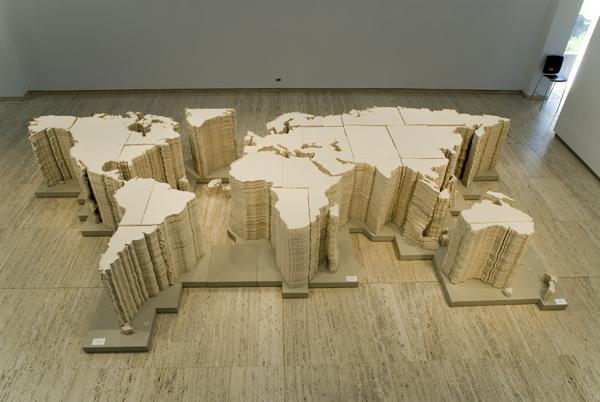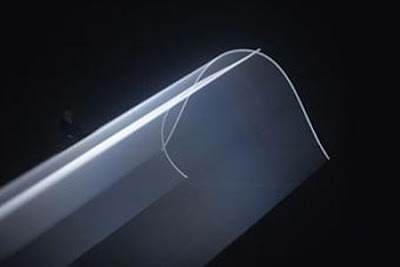The PHENOMENOLOGY of PROJECTION
“The visible about us seems to rest in itslef. It is as though our vision were formed in the heart of the visible, or as though there were between it and us an intimacy as close as between the sea and the strand. And yet it is not possible that we blend into it, nor that it passes into us, for then the vision would vanish at the moment of formation, by disappearance of the seer or of the visible. What there is then are not things first identical with themselves, which would then offer themselves to the seer, nor is there a seer who if first empty and who, afterward, would open than by palpating it with our look, things we could not dream of seeing “all naked” because the gaze itself envelops them, clothes them with its own flesh.” MMP, The Visible and the Invisible, pg 130-131
How do you experience wear? Can you wear light? I have been looking at methods of projection in modes of exhibiting. Maybe using projection of forms, animation of drape. Last weekend I went to the Screen World Exhibition at ACMI. It was mostly non-engaging. Except for one magical room, displaying a work by Anthony McCall.

My Experience of the Work:
On entering I came to a heavy dark curtain, which I proceeded past to a dark room. On entering the room, it took a while for my eyes to adjust and get a sense of space in the darkness. On one side of the room, two curved lines of light were slowly moving past and amongst each other. On the opposite wall, I realized their origin of their projection. A smoke machine created dust particles in the dead air space between these two sides meaning the traveling light was picked up and given a matter for retention.
At first I instinctually found myself moving away from the lines when they approached me. I tried to place my body within the alcoves of the light walls. I had a heightened awareness of the two sides of each line. The length of their projection made me more aware of the space of the overall room, and the moving possibilities of the way the curved lines cut and segmented it.
Quite literally, I was wearing the light, and the boundaries of this wearing were changing.

I have been thinking a lot about materiality. Can I form drape with something other than fabric. Can a curtain or a wall be transparent in the way it delineates space and creates a form. I think this Merleau-Ponty quote is interesting in thinking about, and can be applied to McCall’s instillation, “The completed object is translucent, being shot through from all sides by an infinite number of presented scrutinies which intersect in its depths leaving nothing hidden.”
Light it translucent and therefore the way it creates a form is transparent in a way. Nothing is hidden when you look at it - everything is knowable. However, there is still something which has to pick up the light - smoke particles, a wall, a curtain, a garment?
Viktor and Rolf’s ‘Bluescreen’ collection also uses projection. In this collection parts of their garments are fabricated in Blue which has the ability to digitally pick up projection. In looking at their catwalk - the retention of a 2D image on a 3D form is really interesting. Merleau-Ponty talks about how the screen has no horizons. The image of a filmed object become in a way flattened and 2D, when projected onto a form. For example the way the gathered neckline of the dress.




Here are a couple more crucial images in building up this projection feeling. The first is of a Galliano dress in which an air brushed image if drapery is superimposed on a dress which is also draped in some areas. It also, to an extent, gives you a sense of fit - in that the image os of loose folds, but the actual garment is so glove-fitting.
The second image is a Balenciaga skirt, in which the fabric is printed with loose flutes of drape.

I've also been looking at ways to rigging up transparencies. Much like the AFAR Project, shows at Off The Kerb Gallery late last year - a collaboration between Alexi Freeman and Aaron Roberts from Room 11 studio. The Project uses one of Freeman's print patterns on repeated hanging transparencies. I like the idea of superimposition which if viewable from multiple angles. The pattern is of a scale which relates to the body, thus the instillation can be worn by it's viewer. I'd like to do some experimenting with still shots of drape or garments in this form. Perhaps again layering this with projection.

Theme of the week - translucency. I think I need to be relating it more to experience though.



No comments:
Post a Comment